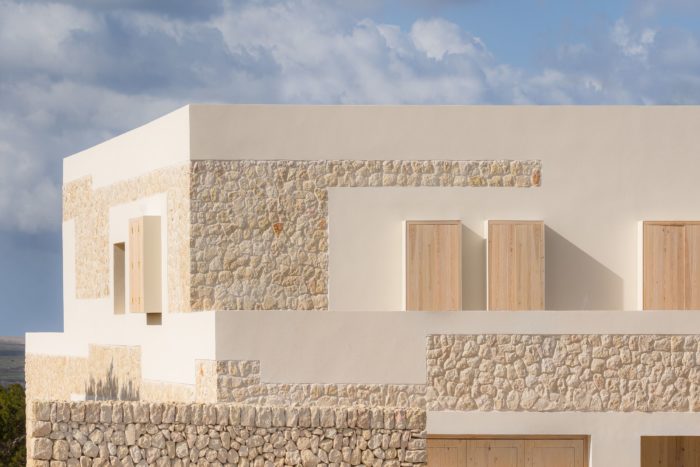
Stone cladding has been a popular choice in architecture for centuries, providing durability and timeless aesthetics. Whether designing a residential home, a commercial space, or any other structure, exterior stone cladding can add character and value to your project. In this comprehensive guide, we will delve into the world of stone cladding, exploring its various types, benefits, installation techniques, and design considerations. Whether you’re a seasoned architect or a newcomer, this guide will equip you with the knowledge to make informed decisions when incorporating stone cladding into your designs.

Casa Fly l beef architekti. © Tomeu Canyellas
Stone cladding, often called stone wall cladding, applies a layer of natural or engineered stone to the exterior or interior surfaces. This technique enhances the structure’s aesthetic appeal, structural integrity, and insulation properties. This cladding can be applied to entire façades, accent walls, or architectural elements like columns and arches.

Stone House l NOMO Studio. © Joan Guillamat
When considering stone cladding for your architectural project, it’s essential to understand the various types available. Each type offers distinct characteristics influencing your design’s overall look and performance.
This type involves using quarried stone that has not undergone significant alteration. Some popular choices for natural stone cladding include:
– Slate: Known for its elegant, rustic appearance, slate is often used for its earthy colors and textured surface.
– Granite: With its durability and variety of colors, granite is a timeless choice for stone cladding.
– Limestone: Limestone offers a soft, sophisticated appearance, making it suitable for traditional and contemporary designs.
– Sandstone: Sandstone is prized for its warm, golden hues and ability to create a welcoming atmosphere.
Engineered cladding is a versatile alternative to natural stone, offering consistent quality and design options. The key types for this category include:
– Cultured Stone: Also known as manufactured stone veneer, cultured stone replicates the appearance of natural stone with lightweight, cost-effective materials.
– Terracotta: Terracotta cladding provides a traditional, earthy look while benefiting from modern manufacturing techniques.